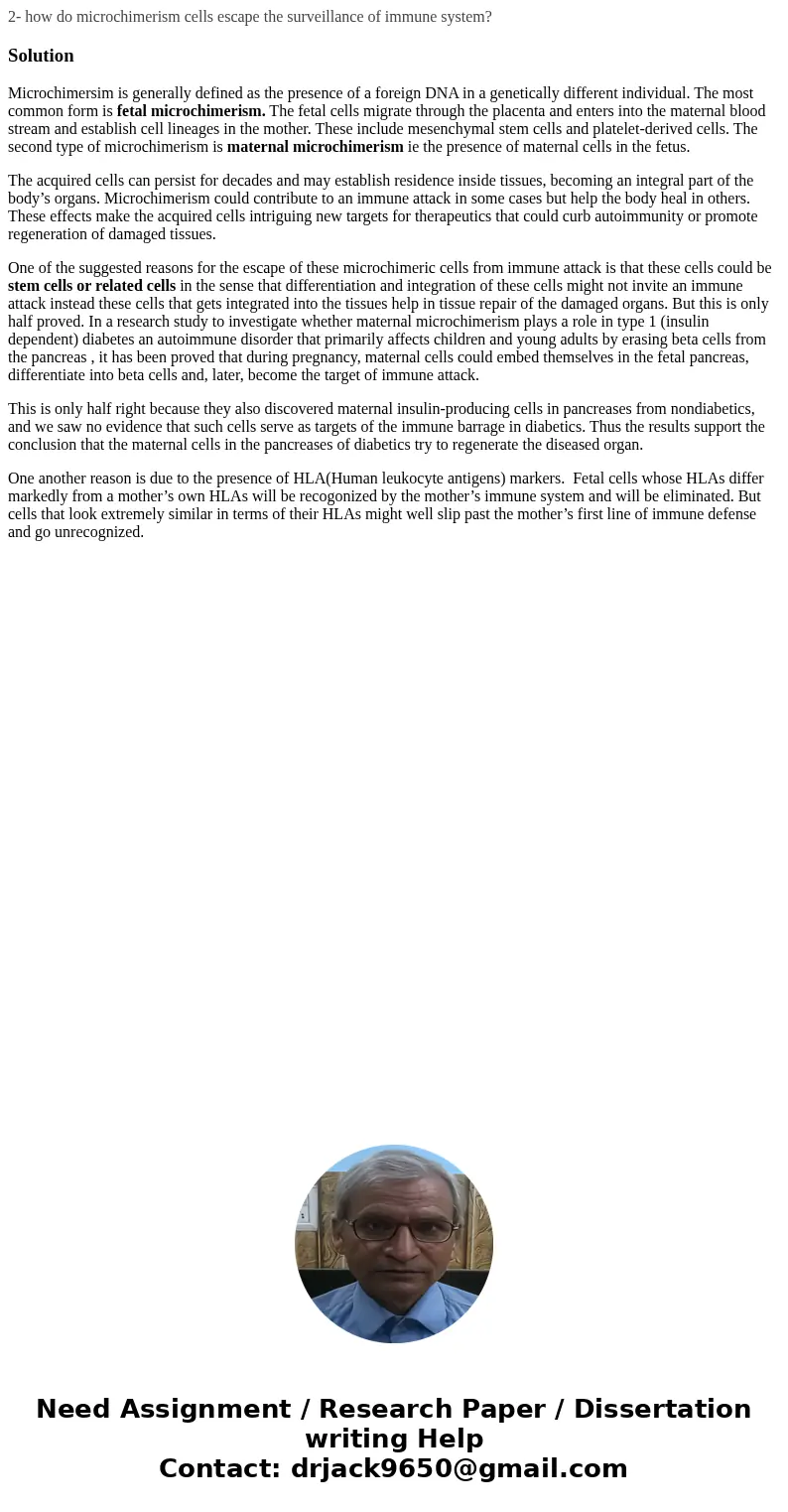2 how do microchimerism cells escape the surveillance of imm
2- how do microchimerism cells escape the surveillance of immune system?
Solution
Microchimersim is generally defined as the presence of a foreign DNA in a genetically different individual. The most common form is fetal microchimerism. The fetal cells migrate through the placenta and enters into the maternal blood stream and establish cell lineages in the mother. These include mesenchymal stem cells and platelet-derived cells. The second type of microchimerism is maternal microchimerism ie the presence of maternal cells in the fetus.
The acquired cells can persist for decades and may establish residence inside tissues, becoming an integral part of the body’s organs. Microchimerism could contribute to an immune attack in some cases but help the body heal in others. These effects make the acquired cells intriguing new targets for therapeutics that could curb autoimmunity or promote regeneration of damaged tissues.
One of the suggested reasons for the escape of these microchimeric cells from immune attack is that these cells could be stem cells or related cells in the sense that differentiation and integration of these cells might not invite an immune attack instead these cells that gets integrated into the tissues help in tissue repair of the damaged organs. But this is only half proved. In a research study to investigate whether maternal microchimerism plays a role in type 1 (insulin dependent) diabetes an autoimmune disorder that primarily affects children and young adults by erasing beta cells from the pancreas , it has been proved that during pregnancy, maternal cells could embed themselves in the fetal pancreas, differentiate into beta cells and, later, become the target of immune attack.
This is only half right because they also discovered maternal insulin-producing cells in pancreases from nondiabetics, and we saw no evidence that such cells serve as targets of the immune barrage in diabetics. Thus the results support the conclusion that the maternal cells in the pancreases of diabetics try to regenerate the diseased organ.
One another reason is due to the presence of HLA(Human leukocyte antigens) markers. Fetal cells whose HLAs differ markedly from a mother’s own HLAs will be recogonized by the mother’s immune system and will be eliminated. But cells that look extremely similar in terms of their HLAs might well slip past the mother’s first line of immune defense and go unrecognized.

 Homework Sourse
Homework Sourse